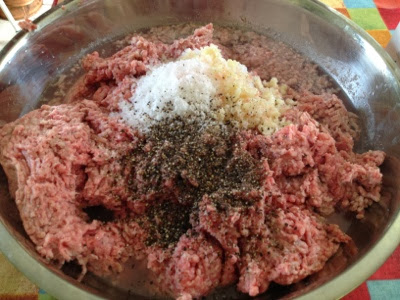The weather has been very unpleasant recently with high rainfall and strong winds.
We decided to move the hens into the stable for the winter from their moveable coop in the paddock. It is warm, dry and well lit. We may choose to use the lights to extend daylight hours and simulate egg production.
We brought in some strong branches and a pallet for them to roost on at night and left a double laying box in the corner to lay in, but of course they have chosen another corner :-)
I don't mind as long as the eggs are clean and not at risk from breakage or savaging crows or magpies.
Hubby sealed the top of the half door with mesh to stop them escaping yet allowing in plenty of light and air.
So far it is working great! They are very warm and the stress/pecking order fights have settled down due to the extra space.
We are getting 5-6 eggs a day at the moment although I discovered yesterday that what I had assumed to be a chicken is in fact a rooster. So another one to join the bachelor group that are free ranging out of doors.
We eat a large amount of eggs here every day. Mainly due to the fact that I don't like the children to eat breakfast cereals. I cook porridge, oat pancakes or eggs with smoked salmon every morning for our breakfast.
We are buying in eggs once or twice a week at the moment and are therefore considering buying in another six young pullets to booster production.
The range is lit in the morning now and I haven't had to use our electric oven in two weeks now. The kettle is always on the boil and a heavy casserole pot is always gently slow cooking something for later.
Life is slowing down now for winter and my favourite time is spent sitting next to the range reading a book with a hot cup of tea.
Obviously for me to do this, I need to ignore the chaos, the mess and the frantic children who won't stop fighting that surround me.
Headphones are a blessing ;-) and a good hubby!



















































